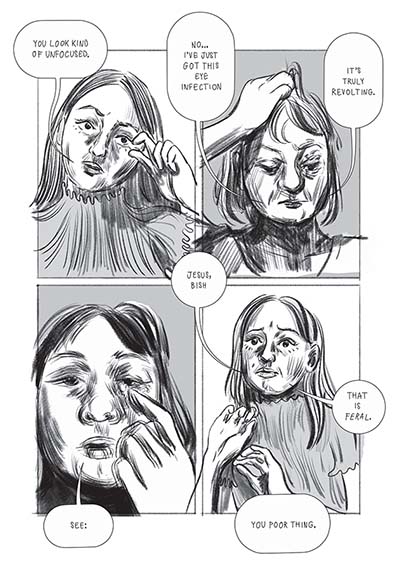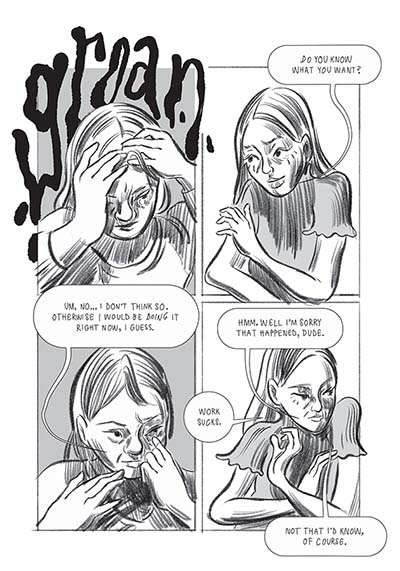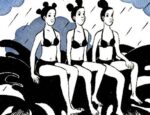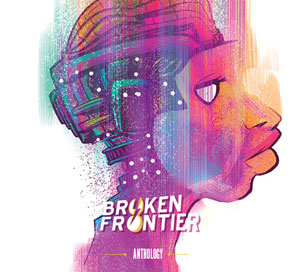It takes a while to pull at all the threads running through Rachel Ang’s stories in this, her debut collection. When one does manage it, however, there is a prevailing sense of disquiet because of the emotions being evoked. I Ate The World to Find You is about several things but, central to them all, is the premise of a young woman coming to terms with the people in her life, based on how they engage with her. As readers, we get to tag along and observe this journey as it plays out in the form of stories that almost resemble episodes in a dramatic series.
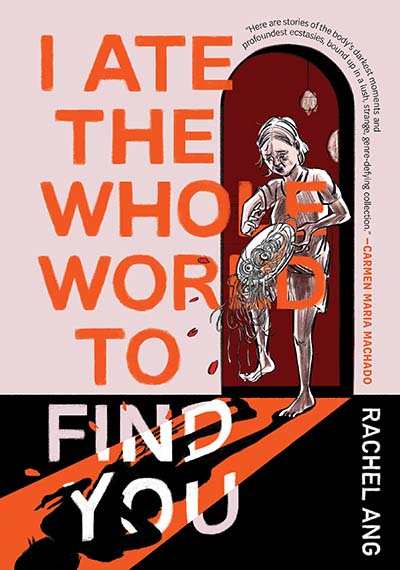
There isn’t a lot being said here with words, because Ang uses art to do much of the heavy lifting. She plays with how panels are constructed, as well as her use of lettering, and there are shadows cast on every page in keeping with the dark forces that many of her characters grapple with. These are stories about hidden desires, missed connections, failures of communication, physical abuse, and confrontations that don’t always end well.
Ang once described the core of her work as being about “the female body in space, the queer body in space, the POC body in space—and relationships between people.” She referred to it as the fluidity of forms, and it helps explain what drives these narratives. Her protagonist, Jenny, engages with people in different ways, and the inadequacies of these relationships slowly teach her things about herself.
In the story ‘Hunger’, for instance, she starts to question the nature of romantic love when a man she goes out with reveals a disturbing desire to change her. In ‘Your Shadow in the Dark’, a conversation with her cousin triggers childhood memories that have been repressed. Ang doesn’t comment on Jenny’s actions or reactions; she merely documents them. It is Jenny who must acknowledge that not everything is as it seems, be it in the way she currently lives, or the way she has lived until now. That the lessons she learns aren’t particularly pleasant ones only makes them more memorable.
This effect is most pronounced in the story ‘Swimsuit’, where what is meant to be a simple date for a swim turns into something darker and more complicated. There are unrequited feelings involved and, as the two characters paddle about in a pool, an incident occurs that both react to very differently. Ang depicts this with great skill and economy, using a couple of pages to hint at a larger tragedy. A part of Jenny knows what has happened, but she also questions whether it really did, and whether her response was adequate. It is a powerful, mature work, and sets the stage for the last story about childbirth and a mysterious bond that all mothers share with their children.
It will be interesting to see what Ang does next, given her avowed interest in questions surrounding women, society, and agency, and the challenging times we live in. She has also spoken of how conscious she is about representation, which is always an important driver of evolution in any artistic medium. For now, this is a debut any artist would be proud of.
Rachel Ang (W/A) • Drawn & Quarterly, $22.95
Review by Lindsay Pereira





